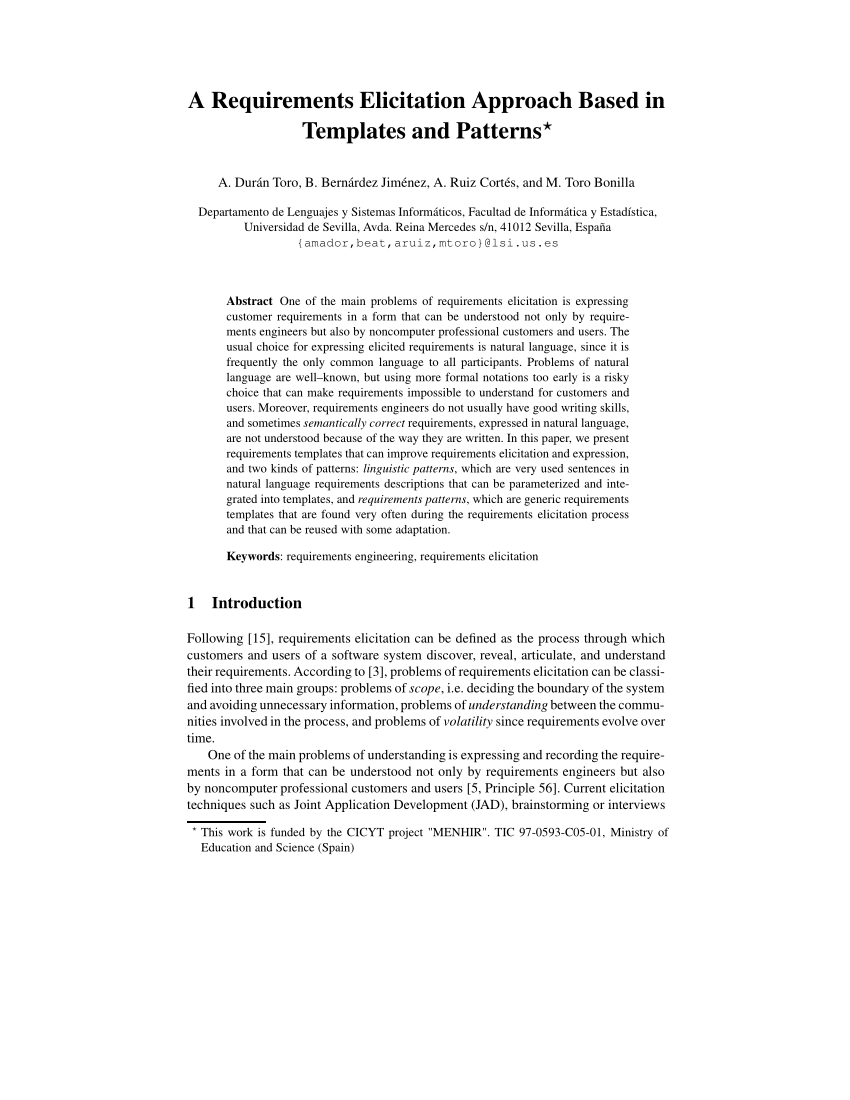Crafting a robust software solution demands a thorough understanding of the intended functionalities and user expectations. Requirements elicitation serves as the cornerstone of this process, enabling analysts and developers to capture, analyze, and document the specific needs and constraints of a project. A well-structured requirements elicitation document serves as a roadmap for the entire development lifecycle, ensuring alignment between stakeholders and minimizing the risk of misinterpretations or omissions.
To streamline the requirements elicitation process, utilizing a pre-defined template offers significant advantages. Templates provide a standardized framework for gathering and organizing information, ensuring consistency and completeness across projects. They facilitate collaboration among team members, enabling efficient knowledge sharing and reducing the likelihood of missed or overlooked requirements.

Elements of a Requirements Elicitation Document Template
A comprehensive requirements elicitation document template typically includes several key elements that guide the process. These elements may vary depending on the specific methodology or industry, but common components include:
1. Project Overview: This section provides a high-level introduction to the project, outlining its purpose, scope, and key objectives. It establishes the context for the requirements elicitation process and ensures that all stakeholders have a shared understanding of the project’s goals.
2. Stakeholder Analysis: Identifying and understanding the project’s stakeholders is crucial. The template should include a section dedicated to stakeholder analysis, detailing their roles, interests, and influence on the requirements. This information helps prioritize requirements and address the needs of each stakeholder group effectively.
3. Requirements Gathering Techniques: The template should outline the specific techniques that will be employed to gather requirements. This may include interviews, workshops, surveys, observation, or a combination of methods. Each technique has its advantages and limitations, and the choice should be made based on the project’s specific needs and stakeholder preferences.
4. Requirements Documentation: The template should provide a structured approach to documenting the gathered requirements. This typically involves capturing requirements in a standardized format, such as user stories, use cases, or functional specifications. Clear and concise documentation is essential for effective communication and traceability throughout the development lifecycle.
Benefits of Using a Requirements Elicitation Document Template
Leveraging a requirements elicitation document template offers numerous benefits that enhance the overall software development process:
1. Improved Requirements Quality: Templates enforce a structured approach to requirements gathering, ensuring that all relevant aspects are considered and documented. This reduces the risk of missing critical requirements or introducing ambiguities, leading to higher-quality software solutions.
2. Enhanced Communication: A standardized template facilitates effective communication among stakeholders. It provides a common language and framework for discussing and understanding the project’s requirements, reducing the likelihood of misinterpretations or conflicting expectations.
3. Time and Effort Savings: Templates streamline the requirements elicitation process, saving time and effort for analysts and developers. By providing a pre-defined structure, it eliminates the need to reinvent the wheel for each project, allowing teams to focus on the specific requirements of the project at hand.
4. Reduced Risk of Errors: A well-structured template helps identify and mitigate potential errors early in the development lifecycle. By capturing requirements in a clear and consistent manner, it reduces the likelihood of misinterpretations, omissions, or inconsistencies, leading to fewer defects in the final product.
5. Improved Traceability: Templates facilitate traceability throughout the development lifecycle. By linking requirements to specific design elements, test cases, and code modules, it becomes easier to track the evolution of requirements and ensure that they are implemented as intended.
Conclusion
A well-crafted requirements elicitation document template is an invaluable asset for software development projects. It provides a systematic approach to gathering, analyzing, and documenting requirements, ensuring alignment between stakeholders and minimizing the risk of errors. By leveraging a template, teams can improve the quality of requirements, enhance communication, save time and effort, reduce the risk of errors, and improve traceability throughout the development lifecycle. Ultimately, a robust requirements elicitation document template lays the foundation for successful software solutions that meet the intended needs and expectations of users.
